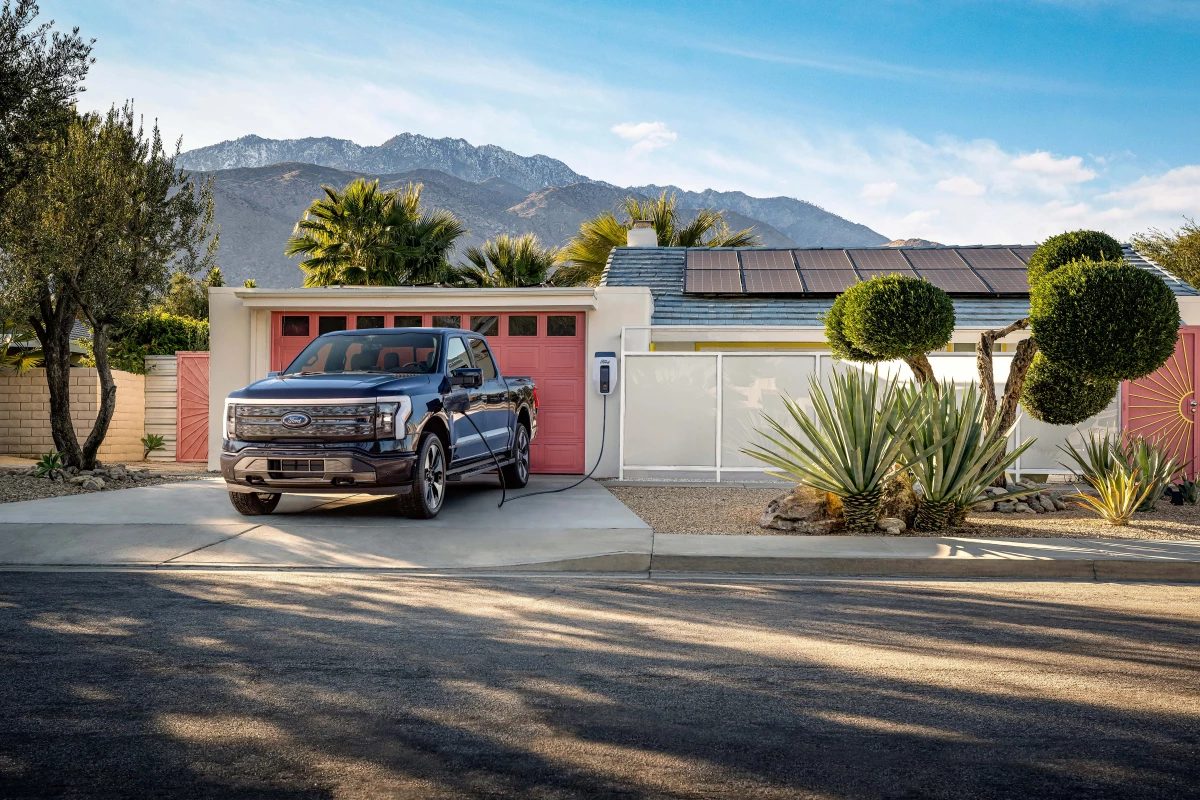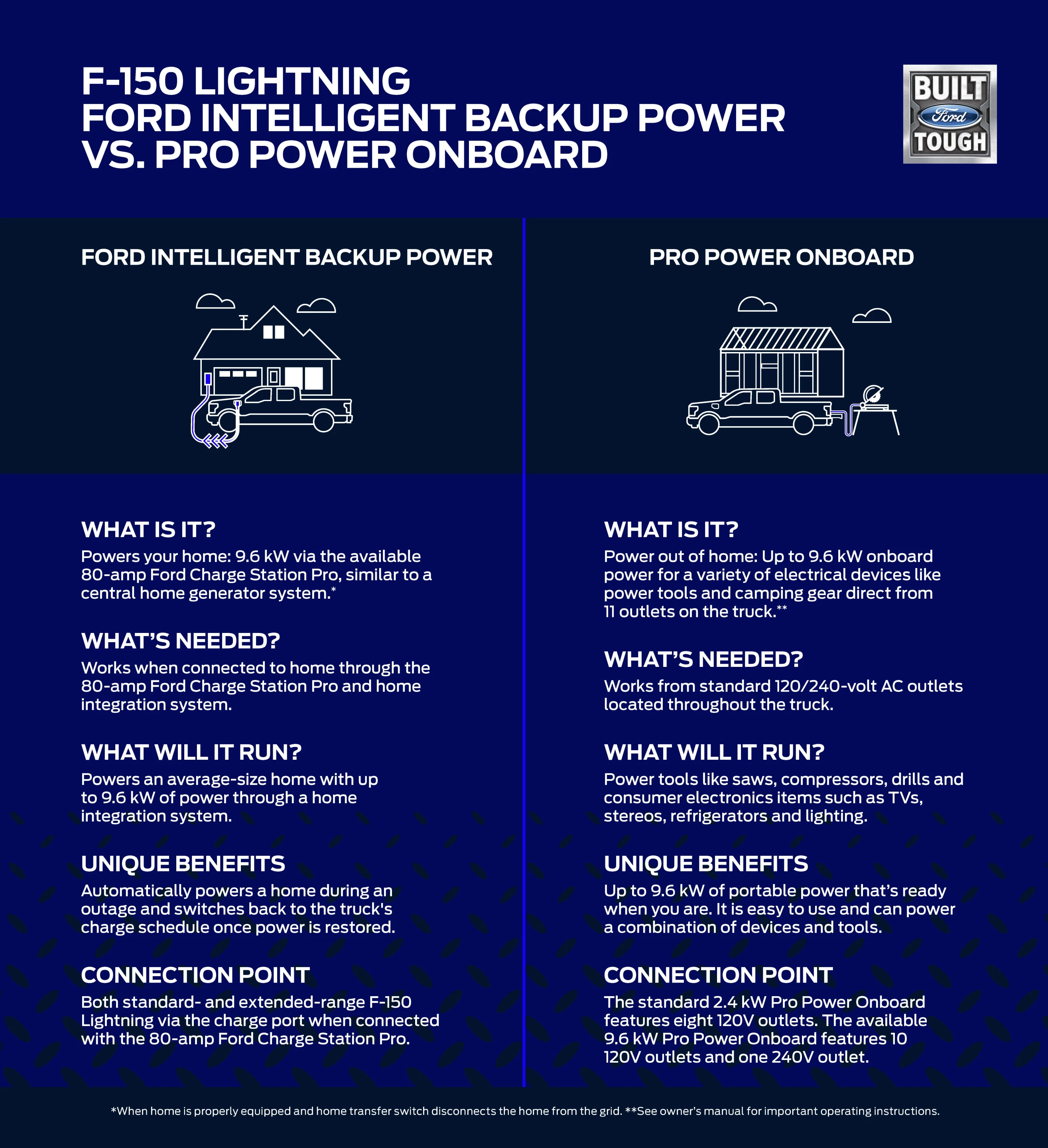Electric vehicles are increasingly including the capability to serve as backup power sources that can be tapped into during blackouts and emergencies. But how exactly will that work at home, and how much will any given EV be able to power around the house? Ford has provided a closer look at how the upcoming F-150 Lightning's 131-kWh extended-range battery will keep the lights on in the average American home.
Ford didn't initially announce the size of the F-150 Lightning's two battery pack options when it introduced the electric pickup last May, opting instead to provide estimated range figures. It made battery capacity figures public later in 2021, revealing that the standard-range model has a 98-kWh battery and the extended-range version a 131-kWh pack. Those batteries are said to be good for an estimated 230 and 300 miles (370 and 483 km) of range, respectively.
Ford said from the get-go that the F-150 Lightning would be capable of serving as a backup power source, and now it reveals that the 131-kWh battery will be able to power the average US home for days on end. When connected via the Ford Charge Station Pro and Home Integration System, the F-150 will automatically take over powering the home if grid power goes down. Using its bidirectional charging capabilities, Ford's system will send up to 9.6 kilowatts of power into the home. When the grid goes back online, the system automatically switches the home back to electrical grid power.

Estimating average US household consumption at 30 kWh per day, Ford says that the Lightning can meet an average household's entire energy needs for up to three days. That 30-kWh figure jives with figures from the US Energy Information Administration, which indicates that the average US residential utility customer used 893 kWh per month in 2020, breaking down to 29.3 kWh per day during that particular leap year. Ford further clarifies that the Lightning battery can power a home for up to 10 days when combined with solar charging and/or power rationing strategies.
The US Energy Information Administration reported last year that the average American electricity customer experienced eight hours of cumulative power outage during the course of 2020, a record high. Even if that eight-hour average came during a single event, the F-150 Lightning would be able to comfortably cover it.

Ford has selected Silicon Valley solar provider Sunrun as its preferred Intelligent Backup Power installer. F-150 Lightning Extended Range buyers will receive the 80-amp Ford Charge Station Pro automatically, and standard-range buyers can purchase it separately. When combined with the Home Integration System, developed in cooperation with Sunrun, the package adds the power inverter, dark start battery and transfer switch needed for the bidirectional power flow.
Sunrun will begin offering the Home Integration System in spring (Northern Hemisphere), around the time when the first Lightning deliveries get underway. The company will also offer solar options that can be integrated into the system at the time of installation.
In the future, Ford plans to expand bidirectional charging capability to allow F-150 Lightning owners to seamlessly charge the truck when power demand and electricity rates are low, feeding power back into the home grid during high demand. This will potentially save customers money while reducing stress on the electrical grid.
More information can be found at Ford's dedicated Intelligent Backup Power website.
Source: Ford








